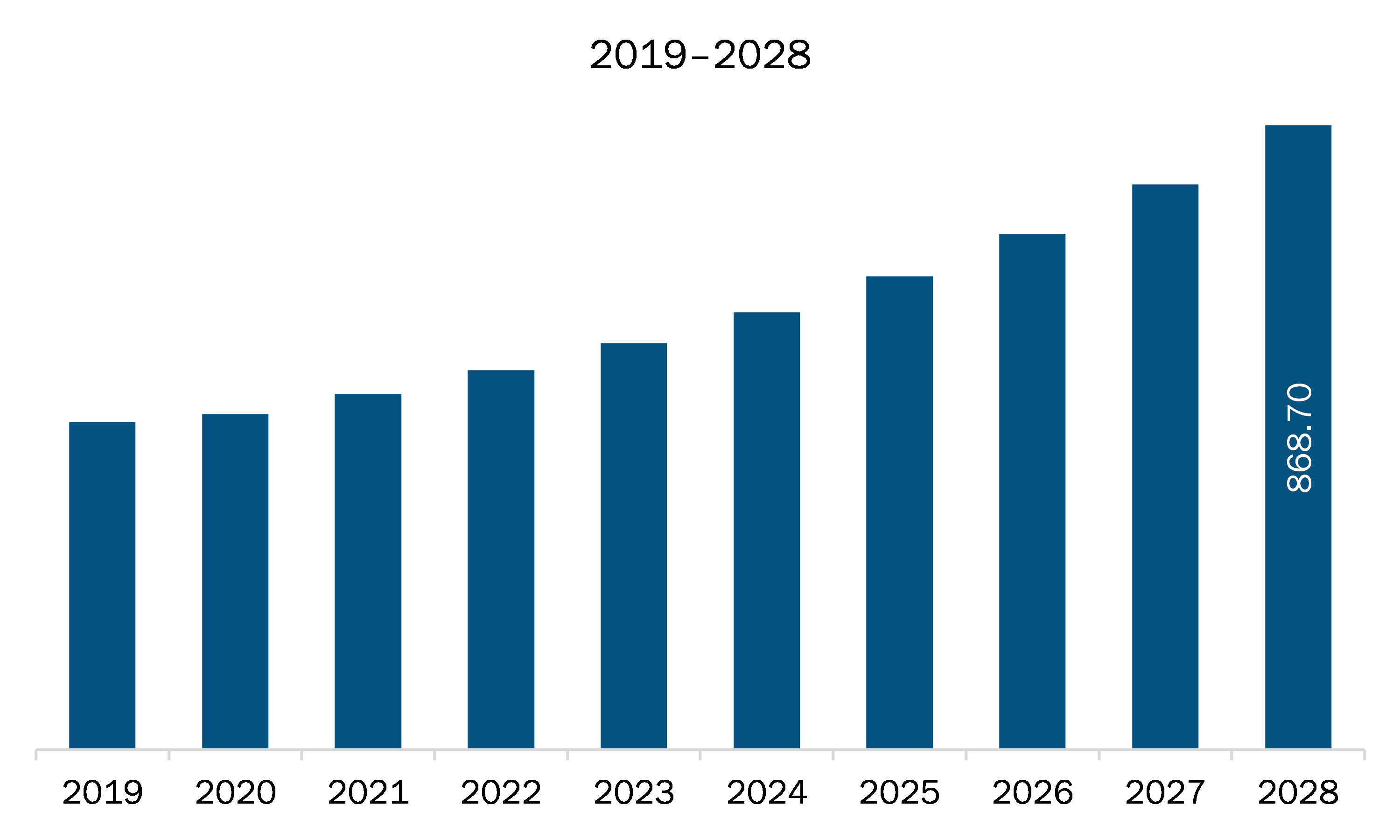The North America system on module (SoM) market is expected to grow from US$ 495.16 million in 2021 to US$ 868.70 million by 2028; it is estimated to grow at a CAGR of 8.4% from 2021 to 2028.
A system on module (SoM) is a small-form-factor computing solution that consists of a hardware and software for developing embedded products. It is a single physical module that incorporates many computing components such as a central processing unit (CPU), random access memory (RAM), flash memory, power management unit, an Ethernet bus, and Wi-Fi and Bluetooth radios. This availability of hardware components as a single unit reduces the complexity of final product designs. The integration of system on module with ready-to-use operating systems, and integrated support for development environments, frameworks, and other third-party software are providing lucrative growth opportunities for industry participants. Many players in the system on module market are providing off-the-shelf carrier boards that can be used for development in a wide range of applications. Further, system on module benefit through reduced complexity while maintaining high flexibility in the form factor, further supporting the market growth.
In North America, social distancing and work from home scenarios increased the sales of consumer electronic devices, such as laptops, home-networking gear, webcams, and monitors. Sales of home entertainment systems and other appliances also increased all of which come with customized chips. Therefore, to meet the demands, the system on module companies in North America are significantly improving their production technology. The US computer processors chipmaker, Intel Corp. reported a significant decline in sales due to production delays. The US government has ordered economic and national security experts to look for gaps in the semiconductor supply chain and reduce the reliance on other countries to manufacture semiconductors. Significant initiatives are anticipated to boost the growth of the North American system on module market during the forecast period.

- This FREE sample will include data analysis, ranging from market trends to estimates and forecasts.
North America System on Module (SoM) Market Segmentation
- North America System on Module (SoM) Market – By Processor Type
- ARM
- X86
- POWER
- FPGA
- GPU
- DSP
- North America System on Module (SoM) Market – By Application
- Industrial Automation
- Entertainment
- Medical
- Transportation
- Test and Measurement
- Others
- North America System on Module (SoM) Market – By Standard
- Qseven
- SMARC
- COMExpress
- North America System on module (SoM) Market – By Country
- US
- Canada
- Mexico
North America System on Module (SoM) Report Scope
| Report Attribute | Details |
|---|---|
| Market size in 2021 | US$ 495.16 Million |
| Market Size by 2028 | US$ 868.70 Million |
| CAGR (2021 - 2028) | 8.4% |
| Historical Data | 2019-2020 |
| Forecast period | 2022-2028 |
| Segments Covered |
By Processor Type
|
| Regions and Countries Covered |
North America
|
| Market leaders and key company profiles |
|
- Historical Analysis (2 Years), Base Year, Forecast (7 Years) with CAGR
- PEST and SWOT Analysis
- Market Size Value / Volume - Regional, Country
- Industry and Competitive Landscape
- Excel Dataset
Recent Reports
Testimonials
Reason to Buy
- Informed Decision-Making
- Understanding Market Dynamics
- Competitive Analysis
- Identifying Emerging Markets
- Customer Insights
- Market Forecasts
- Risk Mitigation
- Boosting Operational Efficiency
- Strategic Planning
- Investment Justification
- Tracking Industry Innovations
- Aligning with Regulatory Trends






















 Get Free Sample For
Get Free Sample For